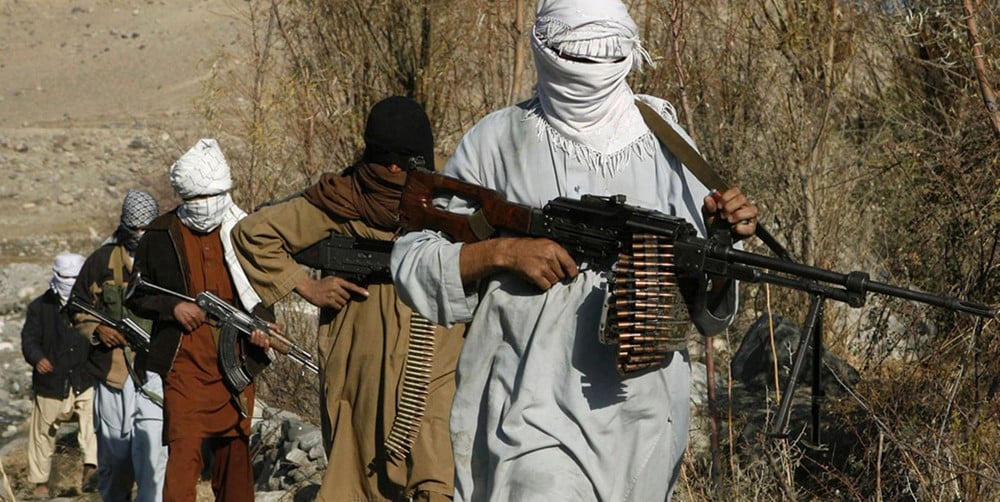
The making of Taliban and the contours of conflicts around tribal area

The Taliban are no monolithic group. They are desperate groups of militants of various hues. They range from Pashtun Taliban, their Punjabi counterparts to all along Afghan Taliban. International jihadists from Arabs, Uighurs and Africans to Uzbeks converge and diverge with their Pakistani hosts when it comes to their violence in and outside Pakistan. The launch of proxies has not quite come off.
Talib is an Arabic word meaning seeker. Taliban is its plural. Among the Pashtuns, a Talib refers to a seminary or madrassah student. Before madrassahs in Pashtun society, a Talib would get his education in a hujra--room--inside the premises of a mosque. Although vanishing, this practice is still alive in some rural areas. Do the Taliban come from madrassahs becomes an important question.
In Pakistan, Taliban come from within and without madrassahs. In terms of number, the contribution of religious seminaries to Taliban varies from as high as seven per cent and as low as one per cent. Nevertheless, when it comes to Taliban leadership, majority of them have been associated with madrassahs.
Although madrassahs contribute less in terms of number of the militants, seminaries have a fair share of responsibility for instilling violence prone mentality. The Taliban rank and files include the unemployed youth for whom joining Taliban was meant for earning a livelihood. Secondly, many tribesmen would join the militants’ ranks because doing so presumably enhanced their power and social status in the eyes of their peers. Taliban’s other recruits consist of those locals who join militant forces out of fear.
A typical security region in the making, FATA was presumably safe for those who had men in the militant formations. For many others, Taliban were true Muslims who were well disposed to implement the word of God. Similarly, Taliban had recruits from those people who had lost their dear ones in either Pakistan’s military operations or American drone strikes. Taliban had a stream of criminals and drug dealers among their ranks. For them joining the militia was meant for giving a legal shield to their otherwise illegal business enterprises. The only prerequisites to join Taliban were to sport beard and up the trouser above the ankles. This was the Pashtun component of Taliban.
There are also Punjabi Taliban. The words Punjabi Taliban were coined by Afghan Taliban. Any militant who did not speak Pashto and came from Pakistan was dubbed as Punjabi Taliban. They were people of mixed sub national groups from especially Southern Punjab. Besides Punjabis, they were also Kashmiri, Urdu speaking and some Buremese and Bengali immigrants of Karachi. They were the members of various militant groups engaged in Indian occupied Kashmir. Many among these militants were the members of various sectarian groups engaged in the Punjab sectarian war.
These Punjabi militants were the fringe groups who had parted ways with their parent organisations after Musharraf’s U-turn on Kashmir and Afghan fronts.
Post 9/11, with international pressure mounting, Pakistan made a volt face by throwing its weight behind the US-led coalition at the expense of Taliban. Similarly, for militants active in Kashmir, now under international scrutiny, time was to go dormant. For many Punjabi militants, Musharraf’s about-turn vindicated their stance. It was the time to strike back against the state. For them, choosing FATA was meant for survival and avenging the betrayal. Once based in FATA, they lent tribal Taliban a hand in striking in major urban centres in Pakistan.
Pakistani Taliban are divided into two categories. They are either pro-state or anti-state. The former are the likes of Maulvi Nazir group from among the Ahmedzai Wazir tribe based in South Waziristan and Hafiz Gul Bahadur group from North Waziristan. Maulvi Nazir was killed in a US drone attack back on January 4, 2013 in Sra Kanda village in South Waziristan. The pro-Pakistan Taliban commander, Nazir led the Taliban belonging to the Ahmadzai Wazir tribe inhabiting Wana, Shakai and Angoor Adda areas. Salahuddin Ayubi, another militant commander, replaced Nazir. Both groups fight to expel NATO forces from Afghanistan and shun clash with Pakistani state.
The Tehreek-e-Taliban Pakistan (TTP), a loose conglomerate of more than two dozen militant factions, epitomizes the anti-state Taliban. Operating out of almost every corner of Pakistan, these Taliban fight both the Pakistani government and NATO forces from across the Durand Line. They operated primarily from the Mehsud tribe populated areas in South Waziristan. The militant outfit has some 30,000-35000 operatives from all across Pakistan. The TTP has an overlapping of membership from other sectarian and jihadi groups. Those militant formations include Ahl-e-Sunnat Wal Jamaat, Lashkar-e-Jhangvi, Lashkar-e-Tayyiba, Harakat-ul-Jihad Islami and Jash-e-Muhammad.
In the country, there are also Afghan Taliban. They only fight the NATO forces in Afghanistan and avoid conflict with Pakistan. They are divided into various resistance movements. Billed as Quetta Shura, this Afghan Taliban faction is operating out of western Balochistan.
The Haqqani network was based out of Miramshah in North Waziristan before the operation Zarb-e-Azb began in the tribal agency. Gulbuddin Hekmatyar’s Hizb-i-Islami network was presumably based in and around Peshawar. Then there are international militants who are on the same page with Afghan Taliban when it comes to their armed resistance against NATO in Afghanistan. Nevertheless, like TTP, these international jihadists also fight the Pakistani armed forces. They are Arabs associated with al Qaeda, Uzbeks of Islamic Movement of Uzbekistan, Chechens, Chinese Uighurs and Africans.
For these Muslim militants, Afghanistan was a safe haven until Taliban were ousted. They moved to Pakistan’s tribal areas to seek shelter. Uzbeks are especially notorious for carrying out brazen attacks in Pakistan. Thanks to militants’ spiraling violence, Pakistan has suffered enormously. But is there any way out of this quagmire?
The progressive erosion of state writ combined with some official connivance account for militants’ relocation out of Pakistan’s tribal hinterland. Until state capacity is strengthened, FATA would function as militants’ safe haven.